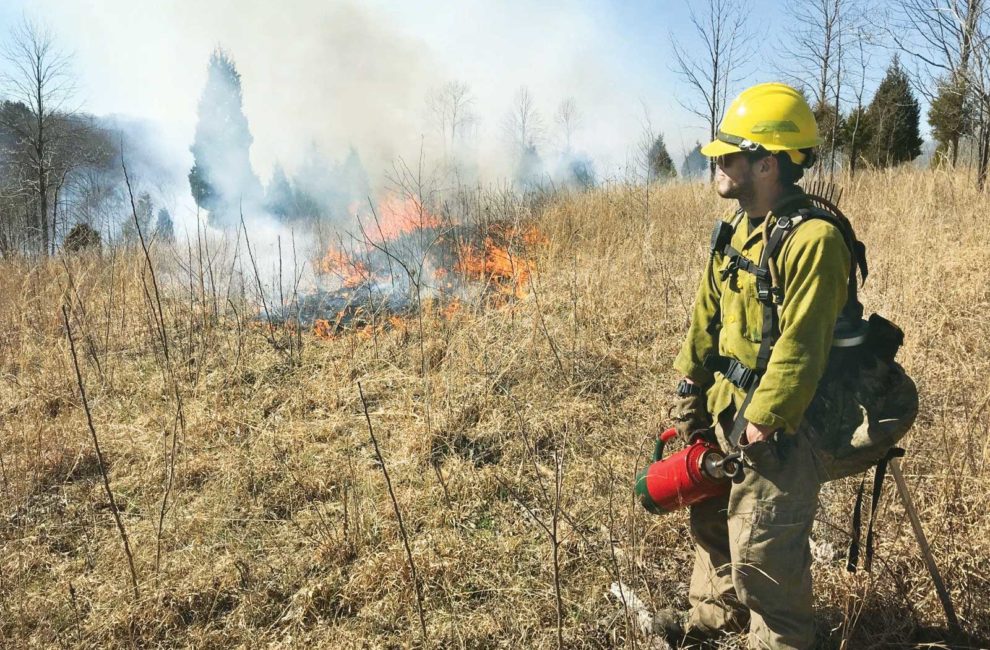Why They Burn The Hoosier National Forest

A firefighter supervising a scheduled burn inside the Hoosier National Forest Photo courtesy USDA
Not all forest fires are bad. When smoke rises out of the HNF, it’s most likely a prescribed fire. These coordinated events are designed to maintain forest health by removing undergrowth to reduce the risk of catastrophic wildfires.
Usually from February to April, specialists like Terry Severson, fire-management officer for the HNF, execute “low-intensity” burns, a term of art for slow-moving ground fires. “We don’t want a fire up in the shrub layer or up in the canopy of trees, so we ignite that fire to maintain it on the ground and lessen the intensity,” says Severson. Forest personnel will oversee targeted burns that can range in size from 5 to 1,200 acres.
Following burns, the thinned-out forest and prairie leave a better environment for wildflowers to get necessary sunshine and oaks and hickories, among the most desirable trees in the HNF, to thrive without as much competition from others when light comes through the forest canopy. In turn, the wildlife—including deer, turkeys, and squirrels—benefits because oak and hickory trees produce nuts the larger animals eat, and wildflowers provide seeds and pollen to bees and hummingbirds.
So if you’re hiking in the forest and come across something that looks like scorched earth, there’s an easy way to tell if the blaze that caused it was wild or prescribed. Wildfires leave behind solid black, charred ground, but prescribed burns leave a kind of mosaic, when only parts of the forest floor are dark but other parts are green and growing.






